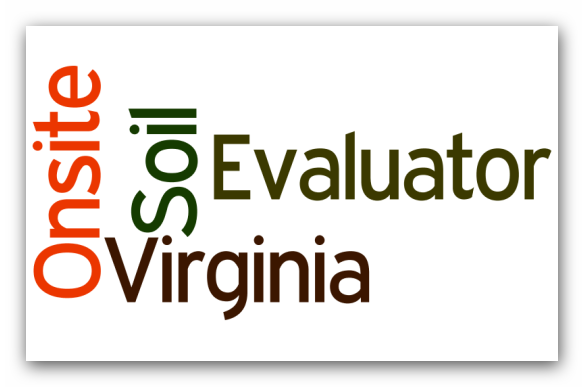Excerpted from the AOSE Advisory Committee
Meeting Notes from July 12, 2005 meeting (click here)
Page 5 of 9
The committee then discussed whether AOSEs should be required to stamp and sign every page of their work as outlined in the AOSE Implementation Manual, GMP #126. The policy states the
following:
Whenever an AOSE is required to sign or certify work according to the AOSE Regulations and/or this policy he must, in addition to his signature, apply a stamp or a preprinted or electronic seal bearing the AOSE’s name and certification number to original cover sheets of plans, drawings, plats, reports, and specifications and to each original sheet of plans, drawings, plats, reports, and specifications prepared by the AOSE or someone under his direct control and supervision. Application of the seal and signature indicates acceptance of responsibility for work shown thereon.VDH staff mentioned the AOSE credential was transforming from a certification to a license in January 2006 by virtue of the health department only accepting work from an AOSE/PE. To assure that professionals were held to an equal standard as other licensed professionals (i.e., architects and professional engineers), VDH was trying to mimic the expectations that the Department of Professional and Occupational Regulation (DPOR) require of its regulants in 18 VAC 10-20-760, which states in part:
A regulant shall apply a stamp or a preprinted or electronic seal to final and complete original cover sheets of plans, drawings, plats, technical reports and specifications and to each original sheet of plans, drawings or plats, prepared by the regulant or someone under his direct control and personal supervision.By keeping one standard for all professionals, then VDH staff thought that there would be less confusion as to what the requirements were. Members discussed whether to recommend having a cover page with the AOSE’s stamp and signature. AOSEs would then be expected to stamp and sign the cover page and the certification page. By implementing this process, then only two signatures would be necessary. Others thought requiring a cover page, although very helpful to the septic contractor, would add unnecessary paperwork.
Some suggested that VDH require AOSEs to sign and stamp the first page and the last page of the package. Others thought this requirement would be unclear because the first page is usually an application submitted by the property owner. There was limited space to stamp and seal the health department’s application; plus, it might add confusion if the owner were to change something after the AOSE had already stamped it. Further, some AOSEs were not using the application as their Page #1. Some suggested that VDH might provide more guidance on how AOSE packages should look.
Some suggested that VDH simply follow the entire requirement expected of professional engineers. Engineers did not have to stamp “cut-sheets” or work that was not original. After further discussion, members wanted a change to health department’s policy for requiring a stamp and signature on every page but they could not agree on what that change should look like. They asked that VDH staff review DPOR’s requirement and offer a change in line with what was
accepted of their regulants.

No comments:
Post a Comment